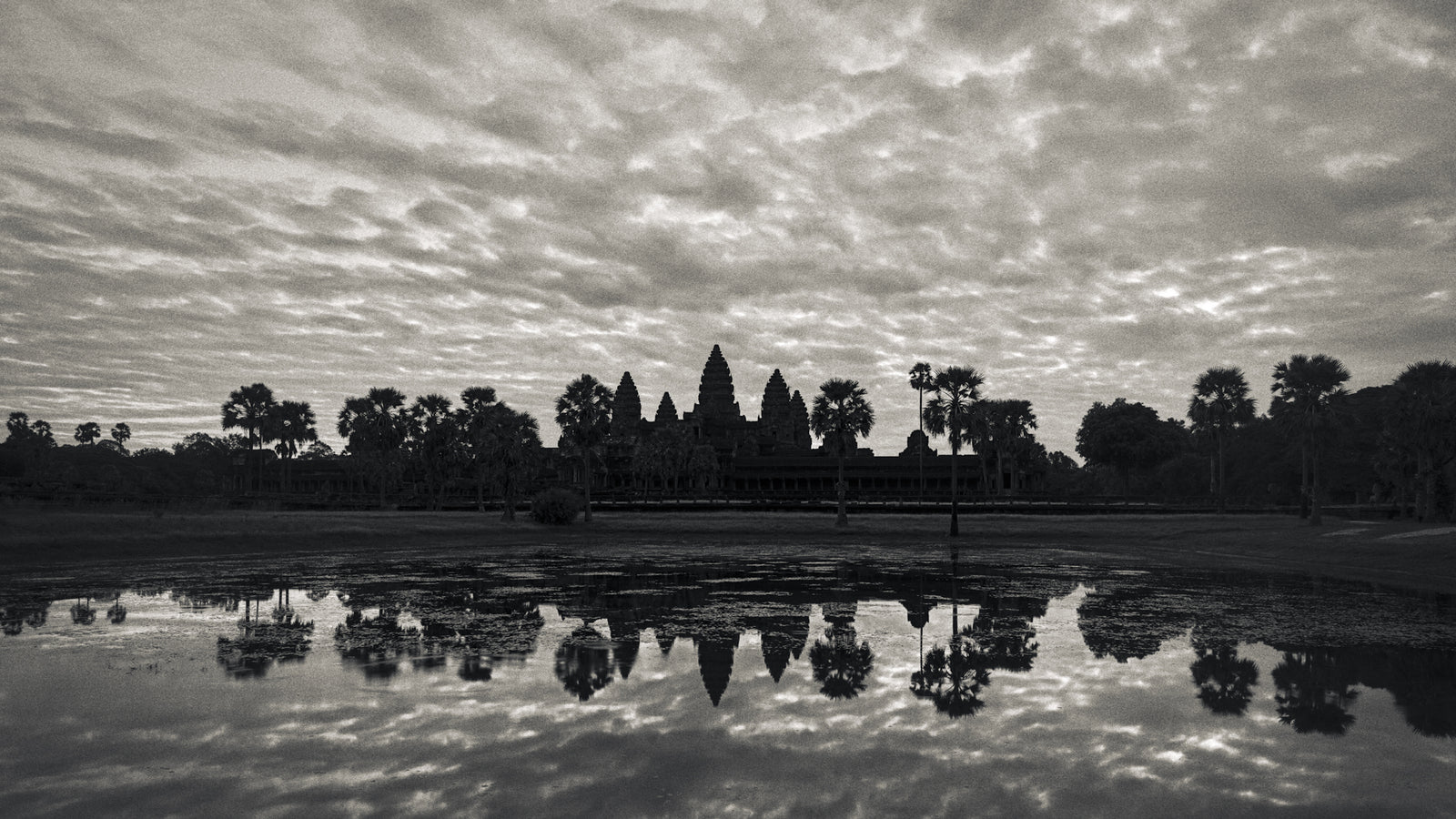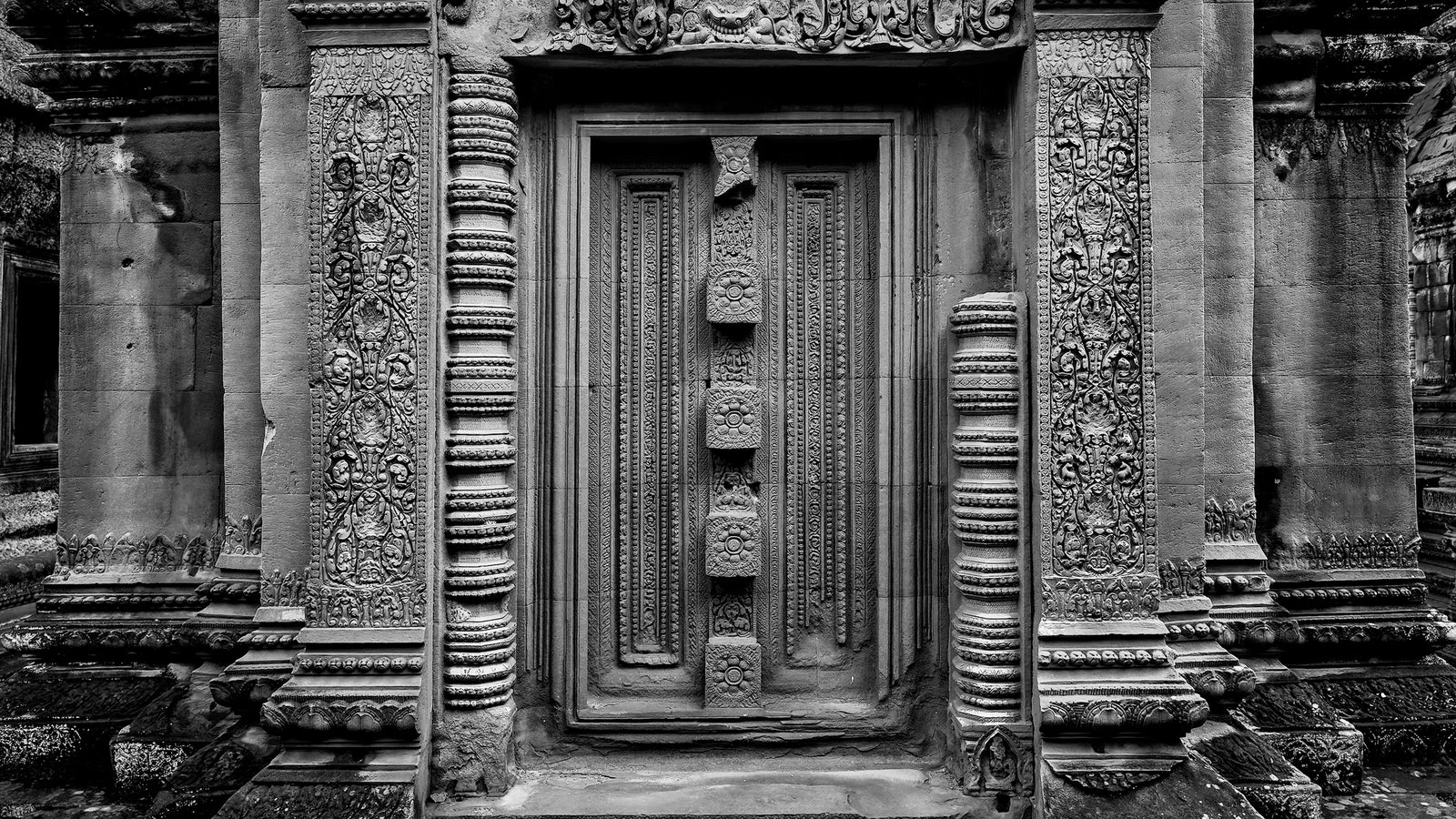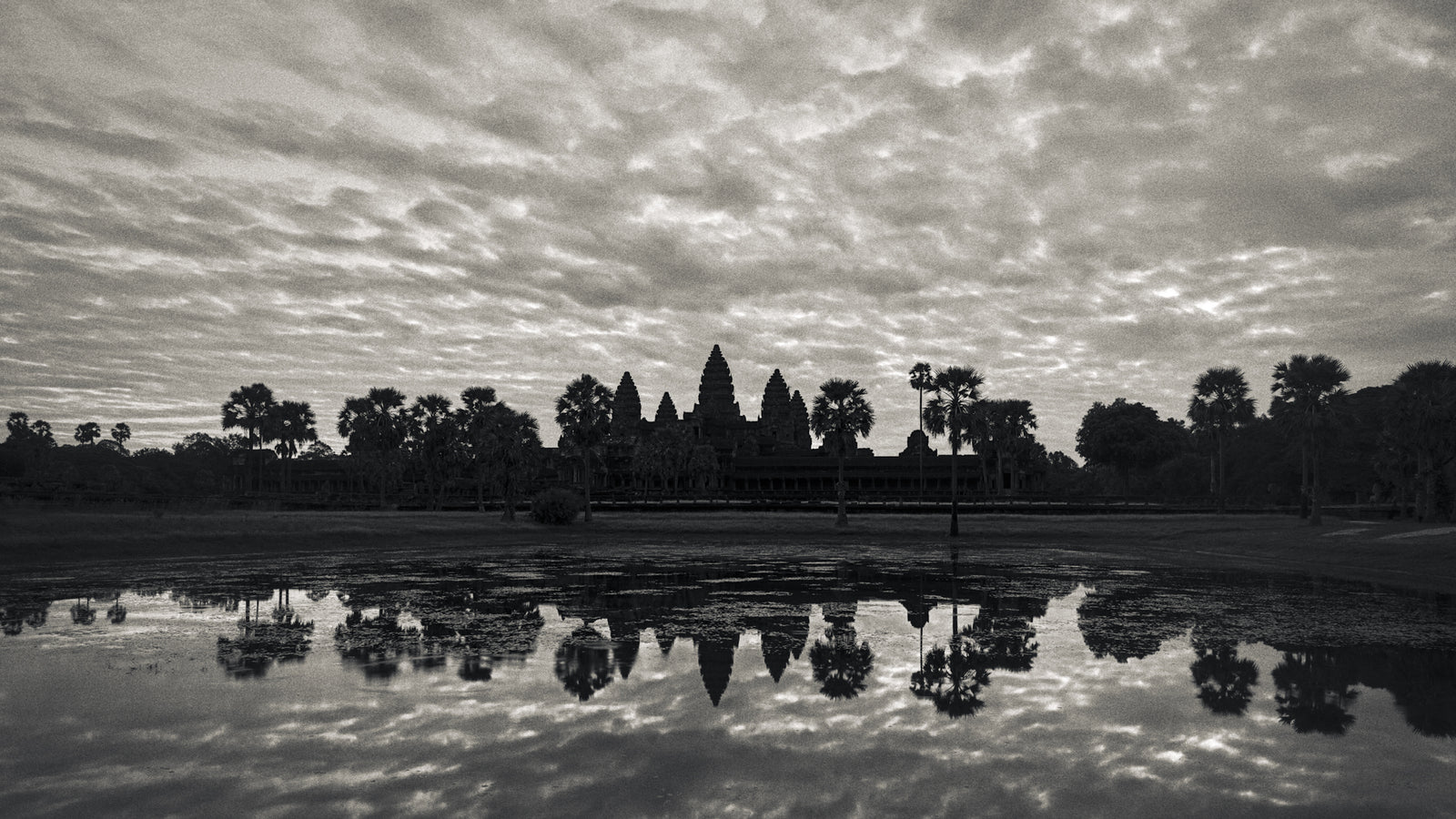Complimentary worldwide shipping on orders over $400 · No import tariffs for most countries
Complimentary worldwide shipping on orders over $400 · No import tariffs for most countries
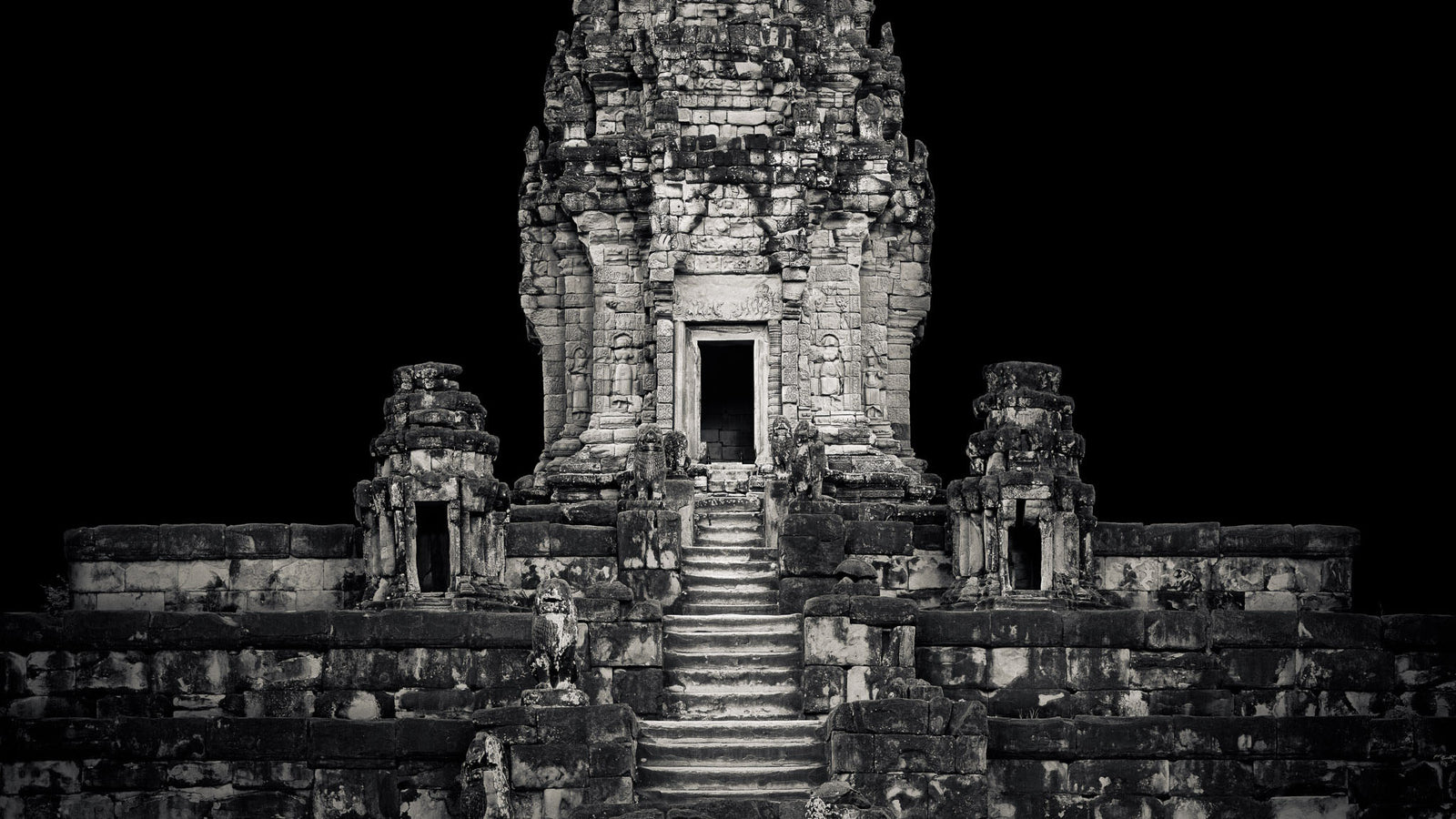
Bakong Temple
2 min read
| Name: | Bakong Temple |
| Aka: | Prasat Bakong, or just "The Bakong" |
| Khmer: | ប្រាសាទបាគង |
| Date: | Late 9th century CE (881) |
| Style: | Preah Ko |
| King: | Indravarman I (reign 877 – 889 CE) |
| Cult: | Hindu (Shaivite) |
The magnificent Bakong Temple is a temple-mountain located in an area called Roluos, near Siem Reap, Cambodia. Bakong Temple is part of the Angkor Archaeological Park, a UNESCO World Heritage Site that includes the world-famous Angkor Wat Temple.
Bakong Temple was the first major state temple-mountain of the Angkor Empire, and was the official state temple of Indravarman I, in what was then the ancient city of Hariharalaya. The king dedicated the temple to the god Shiva in the year 881 CE. Indravarman I himself was buried in the temple.
Recent studies show that an initial version of Bakong Temple, built bi Indravarman I's predecessors, already existed at the end of the 8th century CE. The eight ground level brick sanctuaries have several features, such as round colonettes and makaras facing the centre of the lintels, which are a clear lagacy of the pre-Angkorean period. See Angkor Architectural Styles.
A new version of the lotus-bud-shaped central sanctuary was erected in the 12th century CE, shortly before Angkor Wat Temple.
Bakong Temple is a royal five-tiered pyramid temple that powerfully communicates its symbolic association: Mount Meru, mountaintop residence of the gods. It has a sandstone central tower built on a series of successively receding terraces with surrounding brick towers. It may have been inspired by Borobudur in Java.
A bridge flanked by a superb 7-headed naga balustrade leads over a now-dry moat to the temple, and eight large brick sanctuaries surround the central pyramid. These ground level sanctuaries have some fabulous lintels and a few fascinating door knobs.
At ground level four imposing gates command access to the pyramid, a feature found only at Bakong Temple. These gates are flanked by large pedestals that once supported the statues of giant dvarapalas.
The corners of the pyramid are mounted with statues of elephants. Nandi watches the steps on the cardinal points from below. The heads of all the figures are now missing but the simplicity of the sculpture is nonetheless distinctive; they are a good example of early Khmer craftsmanship. The steps are guarded by the best-preserved statues of Khmer-style lions in Angkor.
Each of the twelve small sanctuaries on the fourth level of the pyramid housed a linga, the symbolic representation of Shiva. The royal linga (Çri Indreshvara) was housed in the central sanctuary.
High-quality moonstones grace stairways and entrances throughout Bakong Temple.
The Khmer empire’s first narrative relief decoration appears on the fourth level of the pyramid. While only a small piece remains, it gives insight into the origins of a tradition that was taken to exceptional levels in the later temples of Baphuon Temple, Angkor Wat Temple and the Bayon Temple.
There is now a Buddhist monastery in the grounds.
Please also see My Work at Bakong Temple, and the in-depth articles about Bakong Temple in My Journal.
Map of Bakong Temple
Also in Angkorpedia
Join My Studio Journal
Receive occasional letters from my studio in Siem Reap—offering a glimpse into my creative process, early access to new fine art prints, field notes from the temples of Angkor, exhibition announcements, and reflections on beauty, impermanence, and the spirit of place.
No noise. No clutter. Just quiet inspiration, delivered gently.
Subscribe and stay connected to the unfolding story.
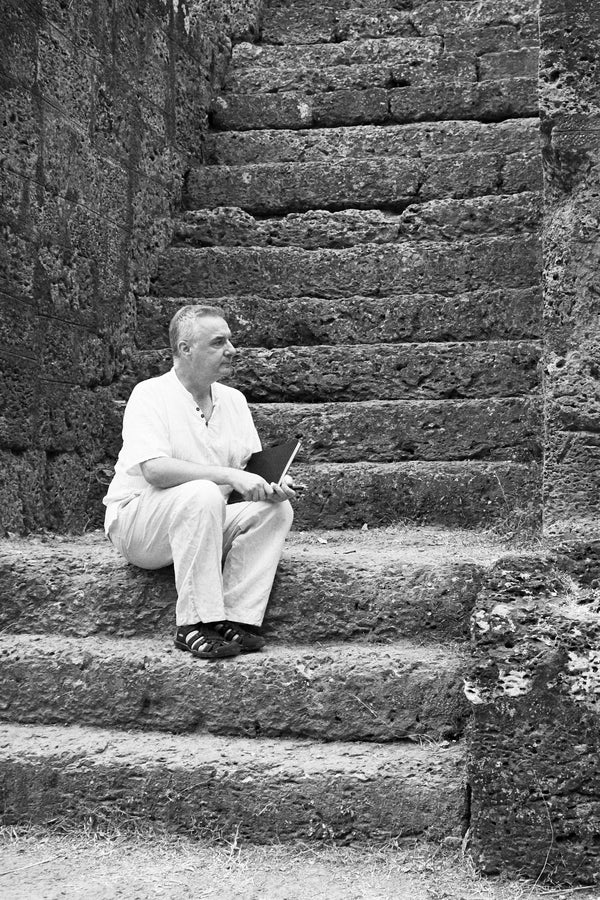
Join My Studio Journal
Receive occasional letters from my studio in Siem Reap—offering a glimpse into my creative process, early access to new fine art prints, field notes from the temples of Angkor, exhibition announcements, and reflections on beauty, impermanence, and the spirit of place.
No noise. No clutter. Just quiet inspiration, delivered gently.
Subscribe and stay connected to the unfolding story.

